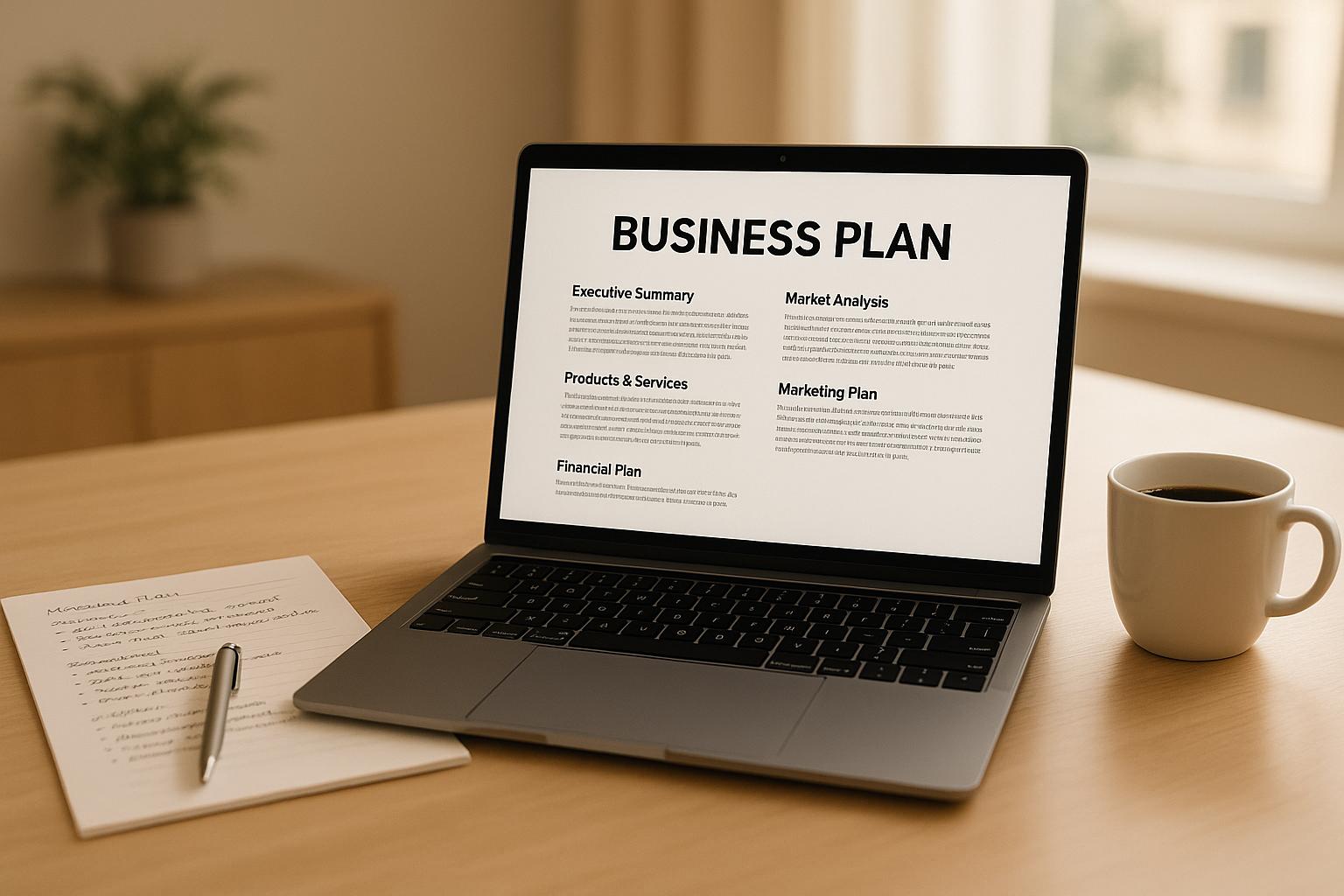
Starting a business is tough. Here’s what you need to know upfront:
- 23.2% of businesses fail in their first year in the U.S.
- 79% survive, but success depends on your industry and location. For example, healthcare businesses have a 21.1% failure rate, while transportation faces 24.8%.
- Revenue is challenging: 70% of sole proprietorships earn less than $25,000 annually, and fewer than 11% hit $100,000.
- Top reasons for failure: Poor product-market fit (42%), lack of funding, and intense competition.
- Startup costs vary: Online businesses average $35,000, while storefronts can exceed $100,000.
Key takeaway: Focus on cash flow, market research, and visibility. Tools like AI-powered financial management can help you track metrics like cash flow, customer acquisition costs, and profitability - critical for navigating your first year.
Let’s dive into the numbers and strategies to help your business survive and thrive.
First-Year Business Survival Statistics
Business Survival Rates by Industry
Data from the Bureau of Labor Statistics shows that about 79% of businesses survive their first year. However, survival rates can vary greatly depending on the industry and location. For instance, businesses in Washington state boast an 86.4% first-year survival rate, with California close behind at 86.0%. On the other hand, Minnesota businesses have a lower survival rate of 72.3%.
Breaking it down by industry, here’s how first-year failure rates compare:
| Industry | First-Year Failure Rate |
|---|---|
| Transportation and Warehousing | 24.8% |
| Information Technology | 24.1% |
| Administrative and Waste Services | 23.3% |
| Finance and Insurance | 22.6% |
| Healthcare and Social Assistance | 21.1% |
| Construction | 19.2% |
| Retail | 12.9% |
These figures highlight the challenges many startups encounter in their early stages.
Top Reasons Businesses Fail
A lack of market demand is the leading cause of failure, with 42% of startup founders identifying it as their primary challenge.
Other common reasons include:
- Market Challenges: Poor product-market fit, inadequate research, and heavy competition.
- Financial Issues: Cash flow struggles, insufficient funding, and unrealistic pricing strategies.
- Operational Problems: Ineffective marketing, team mismanagement, and poor location choices.
Industries with Best Success Rates
Looking beyond the first year, certain industries show strong long-term resilience. For example, businesses in the agriculture, forestry, fishing, and hunting sector had a 10-year survival rate of 50.5% for those established in 2013. Utilities followed at 45.7%, and manufacturing at 43.6%.
Location also plays a big role. Washington’s tech-driven economy contributes to its higher survival rates. In 2021, the Pacific division had the highest one-year survival rate at 84.6%, while the South Atlantic division recorded the lowest at 71.4%.
These statistics highlight an important takeaway: success often depends on strategic choices, including industry focus and location. Careful planning, market research, and securing adequate funding can make a significant difference in overcoming the early hurdles of starting a business.
First-Year Revenue Facts
Typical First-Year Revenue Numbers
First-year revenue can differ greatly depending on the industry and business model. On average, small businesses generate $1,221,884 annually across all types of ventures, though this figure includes both new and established businesses. For brand-new ventures without employees, the average revenue is much lower, at $47,794. Among small businesses, 34% earn less than $50,000 in their first year, while only 9% manage to surpass $1 million.
To provide context, here are corporate profits by industry for Q4 2023:
| Industry | Corporate Profits (Billions) |
|---|---|
| Manufacturing | $780.8 |
| Trade & Transportation | $376.3 |
| Financial Services | $552.6 |
| Information Technology | $200.6 |
Path to First-Year Profit
Generating revenue is just one piece of the puzzle. For most startups, reaching profitability typically takes 2–3 years.
Several factors influence how quickly a business becomes profitable:
- Business Model: Home-based online businesses often break even faster due to lower upfront costs.
- Product Development: Companies working on new products may need at least three years to see profits.
- Market Entry Costs: Higher initial investments can delay the timeline for breaking even.
Success Stories and Their Numbers
Reaching profitability in the first year is uncommon. Successful businesses often focus on managing their finances carefully. This includes diversifying income streams, tracking key financial metrics, and ensuring their product aligns with market demand.
Many entrepreneurs prioritize steady growth over immediate profits. Tools like break-even analysis help them monitor progress and make informed decisions about reinvesting profits to grow their business sustainably.
Next, we’ll dive into startup costs, a critical factor that can impact early profitability.
Introduction to Business Statistics - BCom/BBA 1st Year Sem 1 ...
sbb-itb-08dd11e
Startup Cost Breakdown
Data shows that startup costs can vary greatly depending on the business model and industry.
Cost Examples by Business Type
The amount of money needed to start a business depends heavily on the type of business. For instance, online businesses average around $35,000 in first-year costs, mobile businesses typically need $92,500, and storefront operations require about $100,000.
Here’s a quick look at average startup costs across industries:
| Industry Type | Average Startup Cost |
|---|---|
| Management & Enterprises | $440,740 |
| Utilities | $265,676 |
| Food Services | $252,713 |
| Professional Services | $72,046 |
| Admin Support | $69,509 |
| Construction | $67,349 |
Interestingly, 21% of entrepreneurs start their businesses with less than $5,000, but for some industries, costs can climb above $3 million. First-year spending typically breaks down as follows: 30% for inventory, 21% for equipment, and 15% for location costs. These variations often lead to unexpected expenses, which are discussed below.
Unexpected Business Expenses
Many entrepreneurs encounter unplanned costs. For example, 46% face unexpected tax bills, 43% underestimate technology expenses, and 39% deal with unforeseen shipping costs.
"A small investment to create a name and brand that make sense by aligning with the product and market strategy will go a long way toward decreasing the costs of market entry".
Other commonly overlooked expenses include legal and accounting services, insurance, licensing fees, patent filings, brand development, customer service systems, and inventory management tools.
Cost Reduction Methods
Managing costs wisely can help businesses save money without sacrificing growth. For example, companies lose an average of $18 million annually on unused SaaS licenses, and enterprise-level businesses waste up to $127 million.
Here are a few ways to cut costs effectively:
- Technology Optimization: Reuse software licenses to save up to 30%, and implement accounting automation, which can deliver a 200% return on investment in the first year.
- Workspace Solutions: Remote work not only increases productivity by 24% but also reduces overhead costs. Alternatives like virtual offices or coworking spaces can be more cost-effective than traditional leases.
- Vendor Management: Negotiating contracts can lead to an average savings of 9.2%. Regularly reviewing vendor agreements and consolidating suppliers can also help lower expenses.
"Many small businesses have failed due to poor operational management of accounting affairs".
Using financial planning tools and keeping a close watch on budgets can help avoid these pitfalls.
Customer Acquisition Data
Over the past five years, customer acquisition costs (CAC) have risen by 50%. Here’s a closer look at the numbers and strategies to keep these costs manageable.
Understanding CAC Metrics
CAC is calculated by dividing total marketing and sales expenses by the number of new customers acquired. However, this metric varies significantly by industry:
| Industry | Average CAC |
|---|---|
| B2B SaaS | $239 |
| eCommerce | $274 |
| Transportation & Logistics | $483 |
| Financial Services | $784 |
| Real Estate | $791 |
| Fintech | $1,450 |
Factors like sales cycle length, product complexity, and market competition play a big role in these costs. For instance, B2B services with longer sales cycles might see CAC ranging from $100 to over $10,000, while mobile apps can acquire users for as little as $1 to $25. These figures are crucial for assessing how well startups convert acquisitions into revenue.
First-Year Conversion Data
First-year businesses often face challenges with conversion rates, but certain channels outperform others:
- SEO leads have a 14.6% conversion rate, compared to 1.7% for traditional outbound marketing.
- Email marketing delivers an impressive $38 return for every $1 spent.
- Referred customers show a 37% higher retention rate and 16% greater lifetime value.
Take hideAWAY Handmade as an example. By using quizzes, giveaways, and analyzing buying behaviors to create detailed customer profiles, they added 68,000 new subscribers and generated over $100,000 in additional monthly revenue.
Budget-Friendly Marketing Methods
Making the most of your marketing budget is critical for success, especially in the early stages. Content marketing is a standout option, producing three times as many leads at 62% lower costs.
Kortni Jeane, a swimwear brand, showcased the impact of focused social media campaigns. In just five days on Facebook, they achieved:
- A 22.9x return on ad spend
- Over 2,000 purchases
- An 11% boost in conversion rate
To maximize your marketing efforts, focus on:
- Creating content that solves customer pain points
- Optimizing website content for search engines
- Building an email list for direct communication
- Launching referral programs to encourage word-of-mouth growth
Dropbox’s referral program is a perfect example of this. By offering users and their friends 500MB of additional storage, they saw a 60% increase in sign-ups, 2.8 million referral invites, and reduced CAC from $388 to $0.
First-Year Financial Management
Managing your finances effectively during your first year is crucial. Below, you'll find essential metrics to track and practical strategies to keep your cash flow in check.
Key Financial Metrics to Monitor
Keep an eye on these important numbers:
| Financial Metric | Tracking Frequency | Why It Matters |
|---|---|---|
| Operating Cash Flow | Weekly | Reflects your immediate cash position |
| Accounts Receivable | Weekly | Tracks expected incoming payments |
| Gross Profit Margin | Monthly | Evaluates pricing effectiveness |
| Customer Acquisition Cost | Monthly | Measures marketing efficiency |
| Revenue Growth Rate | Monthly | Indicates business momentum |
| Burn Rate | Monthly | Highlights how quickly you're using funds |
"Float allows us to view our cash flow in real-time. It is probably the most valuable tool we have for running our business." - Ryan Plester, White Room Automation
Steps to Manage Cash Flow
Use these steps to maintain a steady cash flow:
-
Create a Detailed Budget
Develop detailed monthly projections, covering all income sources and expenses. Separate your costs into fixed and variable categories to understand your spending habits better. -
Build an Emergency Fund
Set aside enough to cover 3–6 months of operating expenses. This safety net helps you handle unexpected challenges or seasonal slowdowns. -
Streamline Payment Terms
Establish clear payment terms and follow up on overdue invoices promptly. Offering early payment discounts can also help speed up cash inflow.
AI-based financial tools can simplify these steps, saving time and reducing manual effort.
How AI Tools Can Help
AI-powered tools are transforming financial management for new businesses.
"Float frees us to focus on sales and growing our business – it eliminates a lot of manual work, spreadsheets and number-crunching." - David Taplin, Director at Boostberry
"Float provides a clear cash flow forecast linked to Xero. Now deliver cash flow overviews that owners understand." - Mark Mountford, The CFO Centre
These tools provide several advantages:
- Automated Data Updates: Sync with accounting software for real-time insights.
- Scenario Testing: Evaluate potential decisions before acting on them.
- Clear Forecasts: Create easy-to-understand financial projections for stakeholders.
- Predictive Alerts: Spot potential cash flow issues early.
Choose tools that align with your business size and needs. Start with basic features, then expand as your financial requirements grow.
Conclusion
Surviving your first year in business often boils down to understanding and managing the numbers that matter most. With cash flow problems causing 80% of small business failures, keeping a close eye on your financial metrics is essential.
Your ability to succeed depends on monitoring key performance indicators in five areas: Profitability, Liquidity, Efficiency, Valuation, and Leverage. Today, AI-powered tools make it easier than ever to manage these metrics, with some companies achieving forecast accuracy rates of up to 95%.
"Understanding financial metrics and how they drive a business is crucial to running a successful business." - Nick Chandi, CEO & Co-Founder of Forwardly
To thrive, you’ll need to regularly review critical data (like weekly cash flow), adopt smart technologies for automation, and strike a balance between AI insights and human judgment. Craig J. Lewis, Founder and CEO of Gig Wage, highlights the importance of leveraging both technology and human expertise to reduce risks.
Additionally, the rewards for using effective financial tools can be substantial. For example, IDC found that businesses using NetSuite ERP achieved a 327% ROI over three years.
The first year isn't just about staying afloat - it’s about building a strong foundation. By focusing on the right metrics and leveraging modern tools, you set your business up for long-term success.
Related posts
Get the newest tips and tricks of starting your business!


